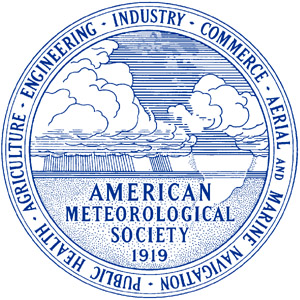by Mary Glackin, AMS President
In normal times, our thousands of AMS professionals and colleagues are completely dedicated to helping people make the best possible weather-, water-, and climate-related decisions. In this COVID-19 period, were not just providing critical information; we are also receiving it. We are each of us following guidance from public health experts and local officials so that we can keep ourselves, our families, and our friends safe and well. We’re joining in the national and global efforts to “flatten the curve.”
 We all continue to work, but these duties are now competing with new ones: caring for children who would normally be in school, searching for basic necessities that would routinely be in stock on supermarket shelves, protecting elderly friends and family members. With campuses and laboratories shut down, professors and students have scrambled to adjust to online teaching and reimagining plans for field experiments. Nonetheless, critical weather and hydrologic services are provided with sharp eyes for spring floods and convective weather. Preparations for the coming hurricane season are moving forward.
We all continue to work, but these duties are now competing with new ones: caring for children who would normally be in school, searching for basic necessities that would routinely be in stock on supermarket shelves, protecting elderly friends and family members. With campuses and laboratories shut down, professors and students have scrambled to adjust to online teaching and reimagining plans for field experiments. Nonetheless, critical weather and hydrologic services are provided with sharp eyes for spring floods and convective weather. Preparations for the coming hurricane season are moving forward.
COVID-19 doesn’t “slightly tweak” the task of building a Weather-Ready Nation; it completely rearranges the landscape. Goals of shelter-in-place and evacuation have to be reconfigured for a world where we are advised by health experts to maintain physical separation from others—more than a challenge in a communal evacuation center.
COVID-19 provides a unique learning opportunity for all of us in the Enterprise. We can experience firsthand how even the best-intended top-down risk communication can sound to someone in harm’s way—and step up our own communications accordingly.
Finally, it’s worth noting as AMS embarks on its second century that our founding coincided with the 1918-19 influenza pandemic. The link between weather, water, climate, and public health (enshrined in the AMS seal) has been integral to building a sustainable and resilient world, and it will likely play a larger role in the future.
Thank you for maintaining essential services and supporting research and education during such a critical, difficult time. Stay well, and stay safe—and at the same time, stay focused, on our contributions to a safer, healthier world.
 Then on Thursday (1:45 PM, Tahoma 2), you can map the New York City area again, in a completely new way: Sina Kashuk of NOAA
Then on Thursday (1:45 PM, Tahoma 2), you can map the New York City area again, in a completely new way: Sina Kashuk of NOAA